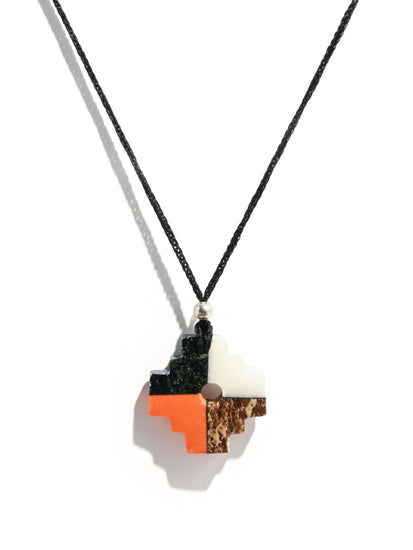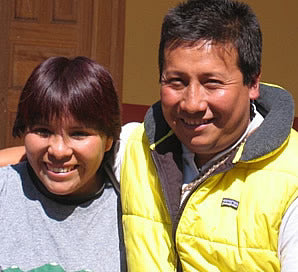One of the most enduring symbols of the Inca civilization is the chakana, also called the Cruz Andina or Andean Cross. At the heart of the symbol is a circular hole which represents the city of Cusco, the capital of the Inca Empire and navel of the Incan world. Surrounding this circle are four corners, ridged with three steps each. Each of these corners is believed to have meaning, although there is disagreement as to what those meanings are.
The significance of one of those corners is generally agreed upon. Each of the three steps of one corner is meant to represent one of the three worlds of the Inca belief system. This includes the lower or underworld, Uqhu Pacha, represented by the snake; the middle world, that of the humans, called Kay Pacha and represented by the puma; and finally the upper world of the gods, Hanan Pacha, represented by the condor. These three animals, along with the chakana, are consistently represented in Inca artwork. When a person died and the soul went to the underworld, it was believed that the puma would descend to collect it and bring it to the condor who would then take it to the upper world.
The other corners are believed by some to represent the values of the Inca culture. For example, one corner may represent love (munay), knowledge (yachay) and work (llankay). There are also the values that were set out by the empire such as respect or obligation to parents, to the Inca ruler and to the gods. One corner may also serve as a type of three commandments: do not lie, steal or be lazy. Additional possible interpretations are that the 12 corners of the chakana represent the 12 months that the Incas used for their yearly calendar. Also, the four main arms of the cross may represent the Southern Cross constellation which was important to the Incas. Those arms also stand for the four provinces surrounding Cusco.
Although these are some of the most common meanings attributed to the symbol, there are some who consider it to be far more mystical in origin. These people believe the symbol has mathematical and geometrical significance, holding within it the key to the Incan understanding of the secret of life. Whatever the actual significance of each point on the cross, there is no doubt that it held great meaning and importance for the Quechua people. It can be found in archaeological sites all over Peru and is still used today in many of the handicrafts made by the indigenous people. That it is sold everywhere as a souvenir should in no way detract from the sacredness it held and still holds for many. Most museums dealing with Inca history will have representations or (occasionally) actual Chakana artifacts.
Source: The Chakana: The Meaning of the Inca Cross by Maureen Santucci
 Fair and ethically
Fair and ethically traded products
- Offering authentic, sustainable products that support artisans, their families, and indigenous ways Learn More...
 Providing a connection to the sacred
Providing a connection to the sacredarts of indigenous communities
- Consciously serving our community for over 22 years with integrity and passion Learn More...
 Living in harmoney with each other
Living in harmoney with each otherand our earth
- Reducing our use of resources with Earth conscious shipping and packaging practices Learn More...
 Fair and ethically traded products. Learn More
Fair and ethically traded products. Learn More
- Offering authentic, sustainable products that support artisans, their families, and indigenous ways Learn More...
 Providing a connection to the sacred arts of indigenous communities. Learn More
Providing a connection to the sacred arts of indigenous communities. Learn More
- Consciously serving our community for over 22 years with integrity and passion Learn More...
 Living in harmoney with each other and our earth. Learn More
Living in harmoney with each other and our earth. Learn More
- Reducing our use of resources with Earth conscious shipping and packaging practices Learn More...



